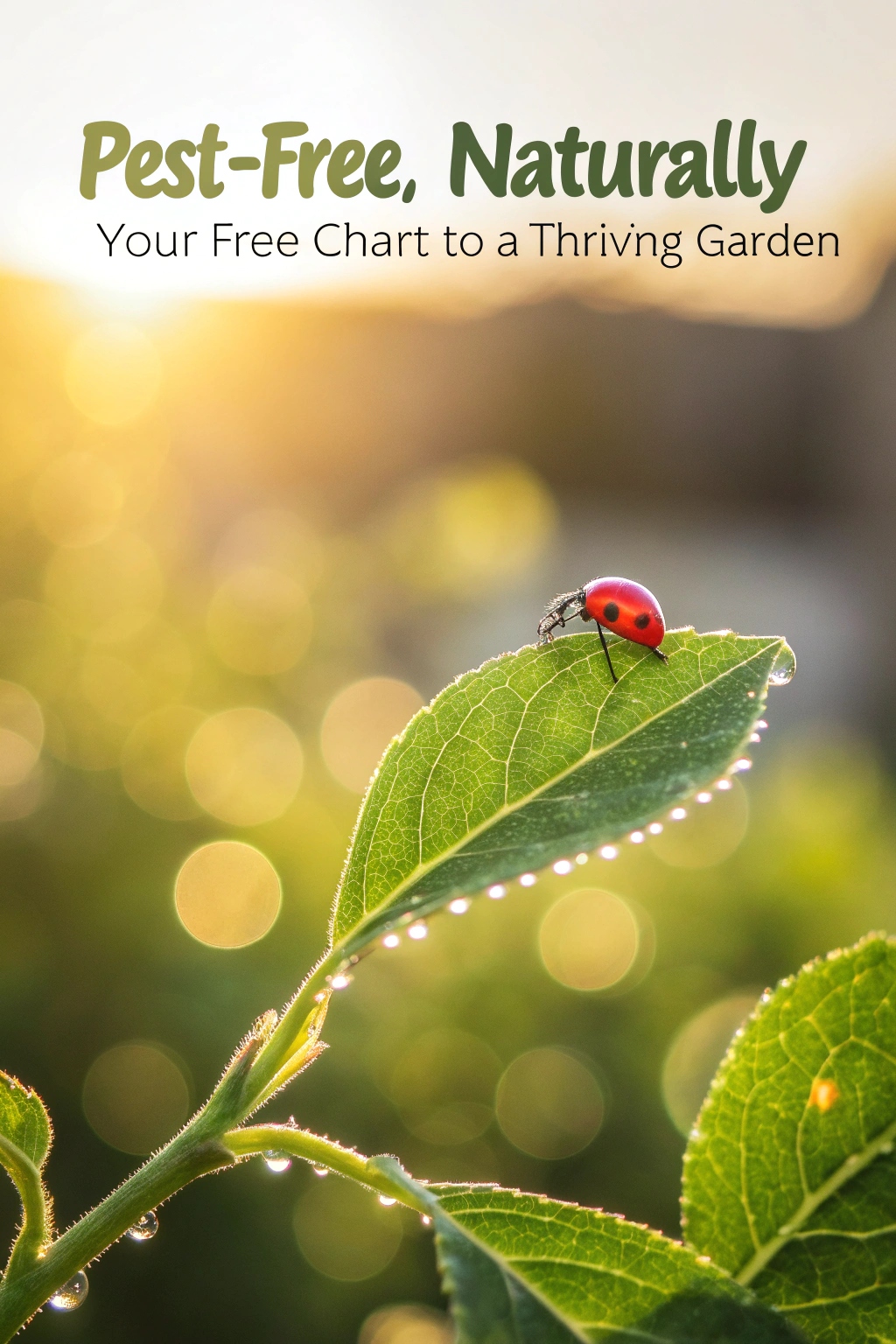Imagine a yard full of colorful flowers that buzz with butterflies and bees. You can make your garden special with simple ideas like growing plants up a wall or adding a quiet corner to relax.
Try 17 easy garden plans to turn your space into a happy place for nature and you.
Need a fresh start? Learn how to grow flowers, herbs, or vegetables in small areas.
These tips help you create a garden that looks great and feels peaceful. Start today and watch your green space bloom!
Create a Colorful Flower Bed
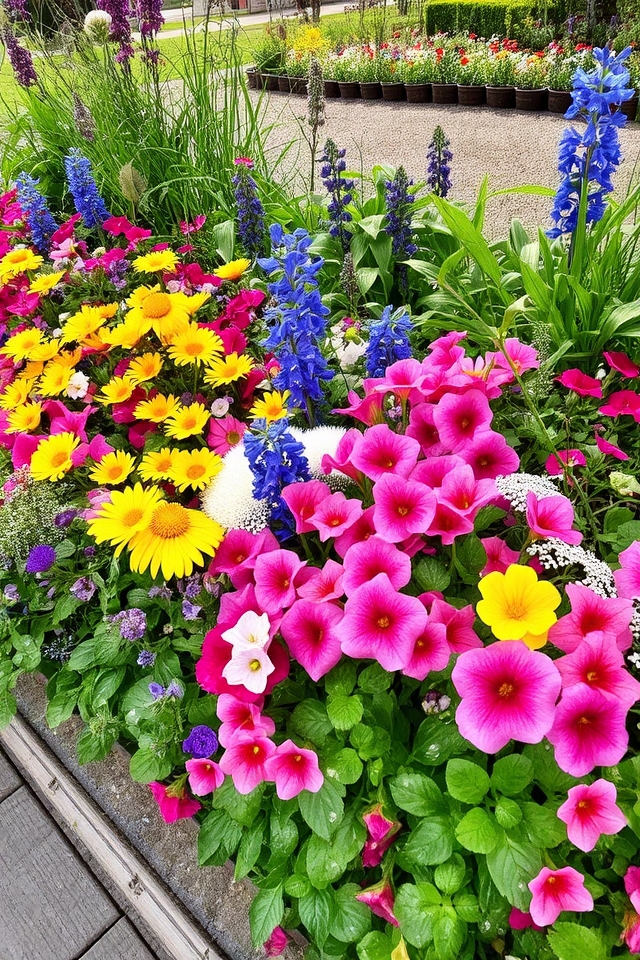
Creating a colorful flower bed is a delightful way to add vibrancy to your garden. Start by choosing a variety of flowers that bloom at different times throughout the season for continuous color. Combine perennials and annuals for diverse textures and heights. Consider color schemes, such as complementary or monochromatic palettes, to enhance visual appeal. Don’t forget to include some foliage plants for added interest. With proper planning and care, your flower bed will become a stunning focal point in your outdoor space.
Establish an Edible Garden
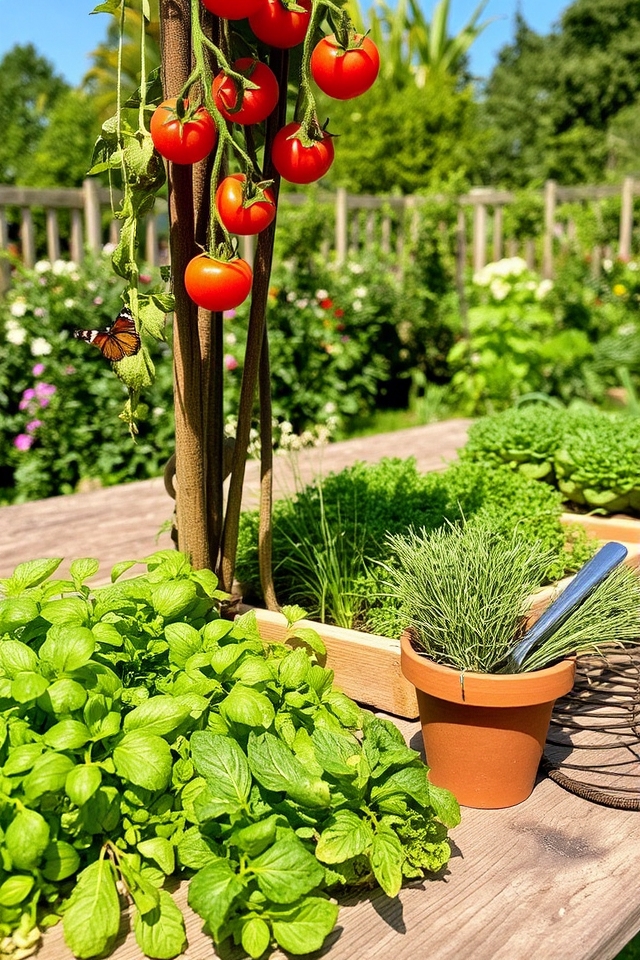
Establishing an edible garden is a rewarding way to grow fresh produce right at home. Start by selecting a sunny location and ensuring good soil drainage. Choose easy-to-grow plants like herbs, tomatoes, or lettuce, and consider companion planting to maximize space and yield. Use raised beds or containers if space is limited. Regular watering, weeding, and pest management will keep your garden thriving, providing you with delicious, home-grown ingredients for your meals.
Incorporate Vertical Gardening
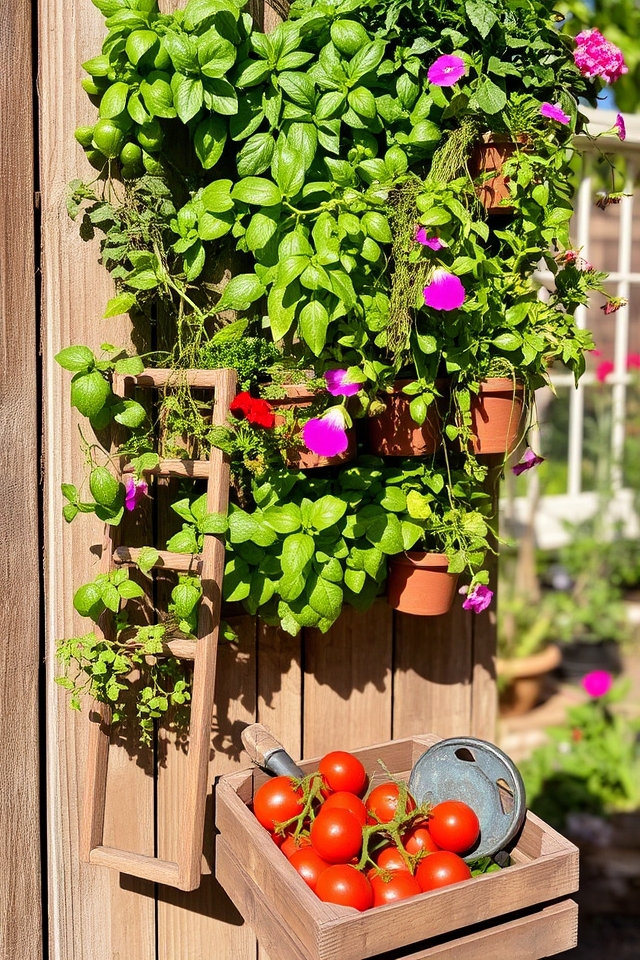
Incorporating vertical gardening into your space can maximize limited areas while adding visual interest. By utilizing walls, fences, or trellises, you can create beautiful green displays without taking up precious ground space. Consider using planters, hanging pots, or pocket gardens to grow herbs, flowers, or even vegetables. Vertical gardening not only enhances aesthetics but also improves air quality and provides an enjoyable way to engage with nature, making it ideal for urban environments.
Design a Relaxing Zen Garden
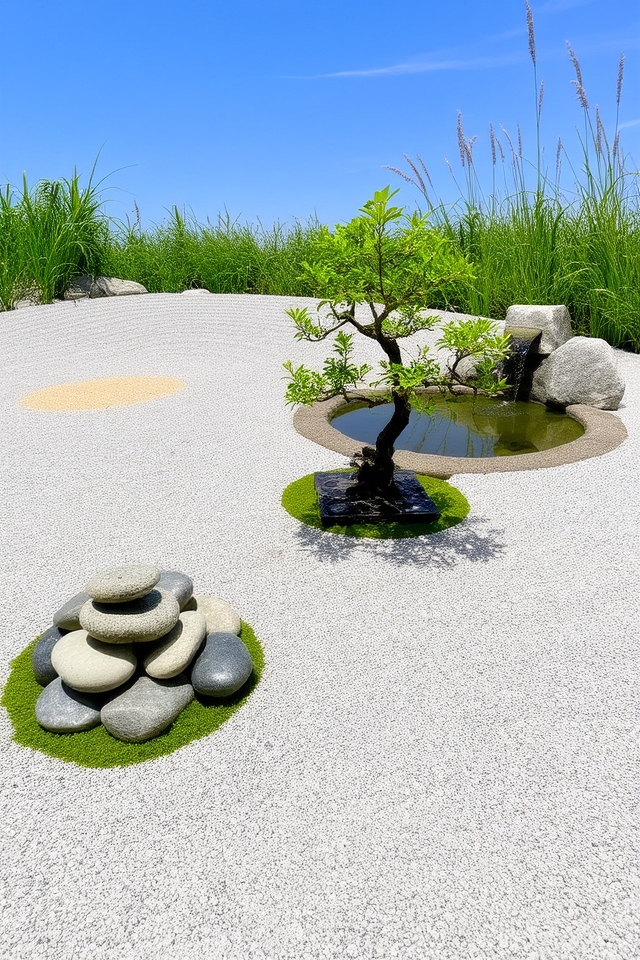
Designing a relaxing Zen garden offers a serene escape that fosters mindfulness and tranquility. Incorporate natural elements such as smooth stones, raked gravel, and minimalist plantings like bonsai or moss. Pay attention to the layout, creating winding paths and intimate spaces for reflection. A small water feature, like a pond or a bamboo fountain, can enhance the soothing ambiance. Embrace simplicity and balanced composition to cultivate a peaceful retreat in your own backyard.
Use Decorative Planters
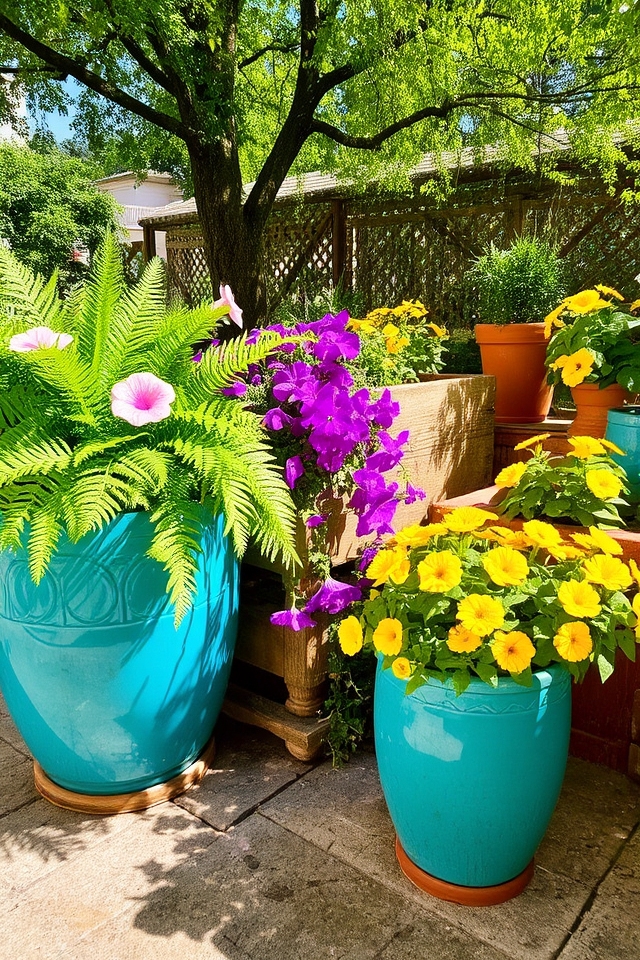
Using decorative planters can elevate the visual appeal of your garden while providing an ideal environment for your plants. From vibrant ceramic pots to rustic wooden containers, decorative planters come in various shapes and sizes, allowing you to express your personal style. Select planters that complement your garden theme and create focal points in your outdoor space. Additionally, choosing planters with proper drainage guarantees healthy plant growth while adding a unique touch to your gardening aesthetic.
Introduce Native Plants
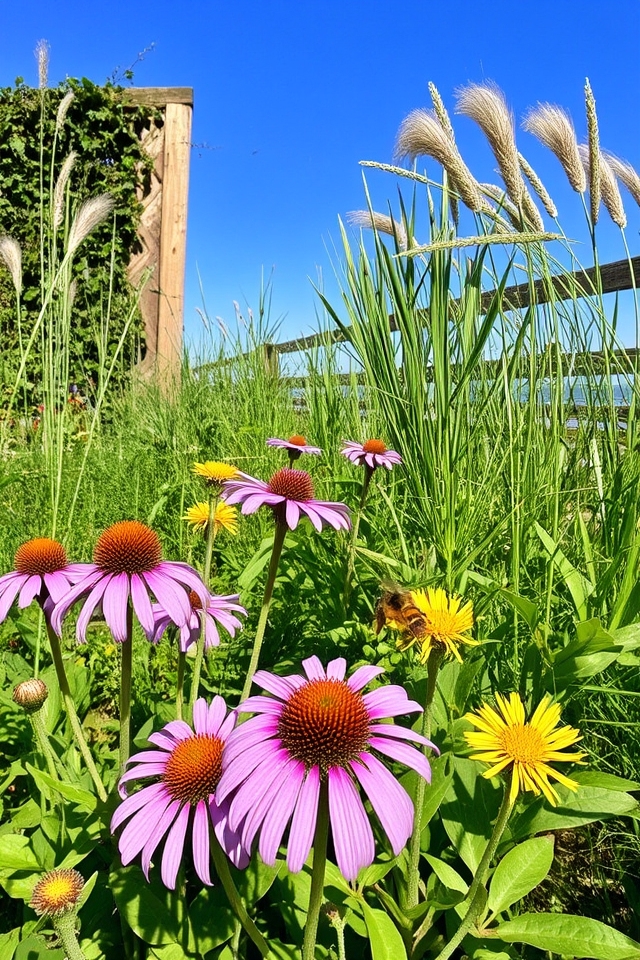
Introducing native plants into your garden is a fantastic way to promote biodiversity and support local ecosystems. These plants are well-adapted to the local climate and soil conditions, requiring less water and maintenance compared to non-native species. By choosing native plants, you also provide essential habitats for local wildlife, including pollinators like bees and butterflies. Incorporating these plants into your garden not only enhances its beauty but also contributes to environmental sustainability.
Build a Butterfly Garden
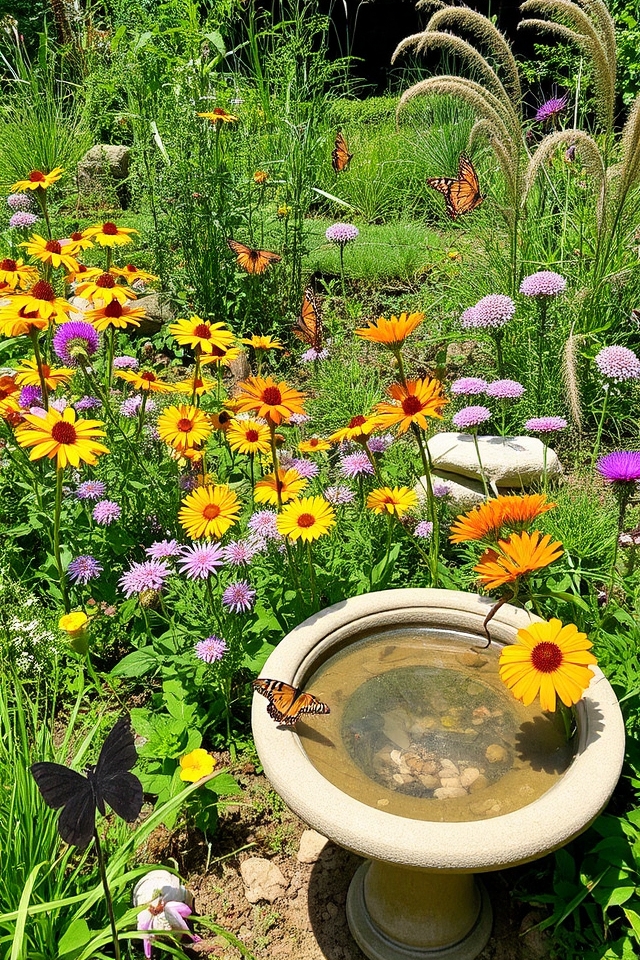
Creating a butterfly garden is a delightful way to enhance your outdoor space while supporting local wildlife. To attract these beautiful pollinators, plant a variety of nectar-rich flowers such as asters, coneflowers, and milkweed, which provide sustenance for adult butterflies. Additionally, incorporating host plants, where butterflies can lay their eggs, is essential—think of dill, fennel, and various native species. Make certain your garden has sunny spots, some sheltered areas, and a shallow water source to create a thriving butterfly habitat.
Start a Herb Spiral
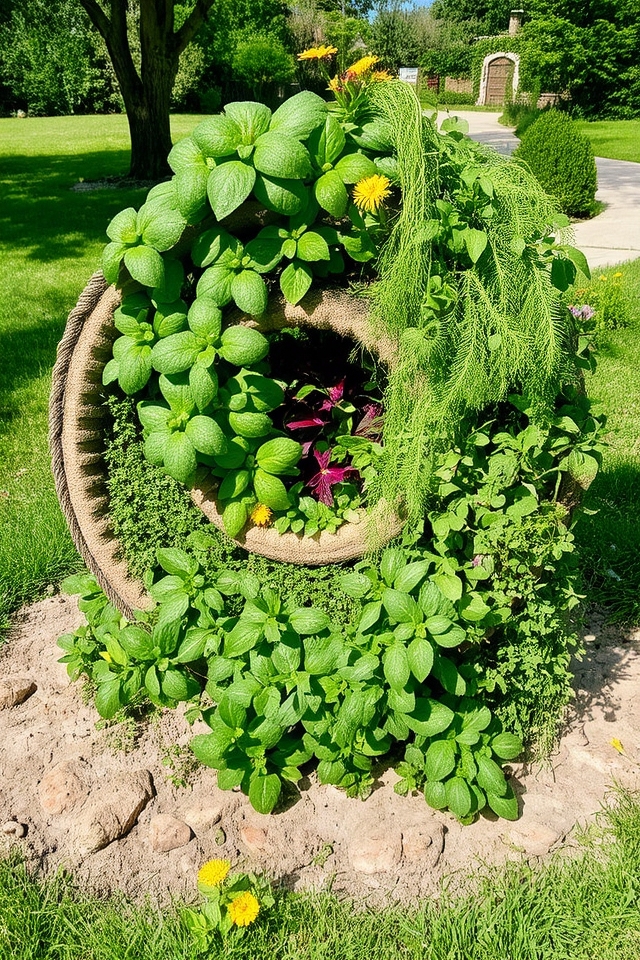
A herb spiral is an innovative garden design that maximizes space while promoting healthy plant growth. Constructed in a spiral shape, this vertical garden takes advantage of varying microclimates, allowing for the cultivation of various herbs in one compact area. The higher zones stay drier and receive more sunlight, perfect for sun-loving herbs, while the shaded lower sections retain moisture for more delicate varieties. This aesthetically pleasing and functional garden not only saves space but also enhances biodiversity in your outdoor space.
Set Up Container Gardening
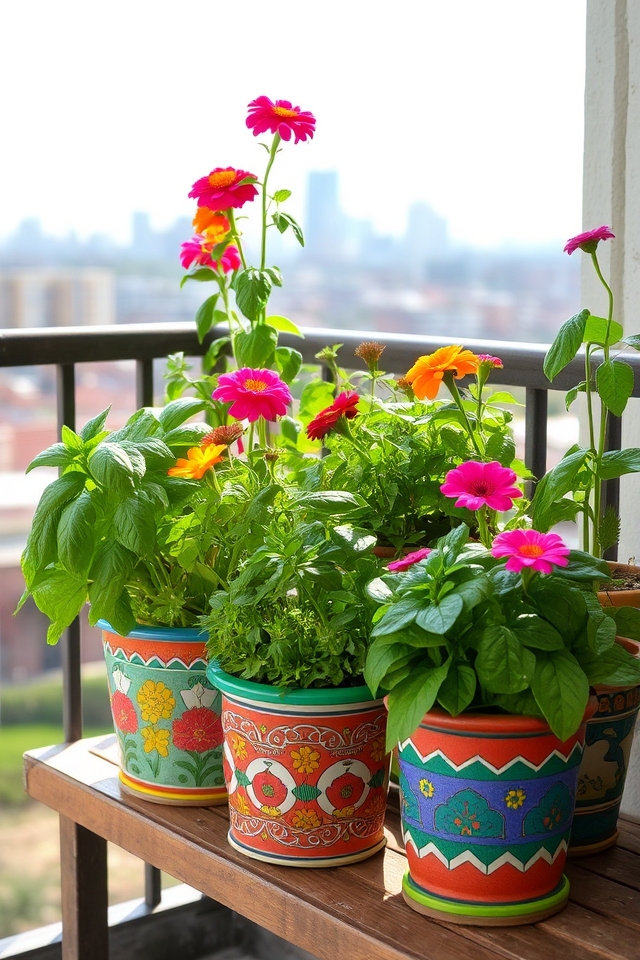
Container gardening is an excellent way to cultivate plants in limited spaces, making it ideal for urban settings or small backyards. Start by selecting containers with adequate drainage to prevent waterlogging. Choose the right soil mix to guarantee proper nutrient availability, and consider the sunlight requirements of your plants. Whether growing herbs, vegetables, or flowers, container gardening allows for creative arrangements and easy mobility, enabling you to customize your garden layout to suit your preferences.
Create a Rain Garden

A rain garden is a beautiful and functional way to manage stormwater and improve your landscape. By strategically placing native plants in a shallow depression, you can create a space that absorbs rainwater runoff, helping to filter pollutants and recharge groundwater. Rain gardens also attract beneficial insects, birds, and butterflies, enhancing biodiversity. Consider incorporating a variety of flowering and leafy plants that thrive in wet conditions, ensuring your rain garden flourishes while contributing to a healthier environment.
Implement a Food Forest
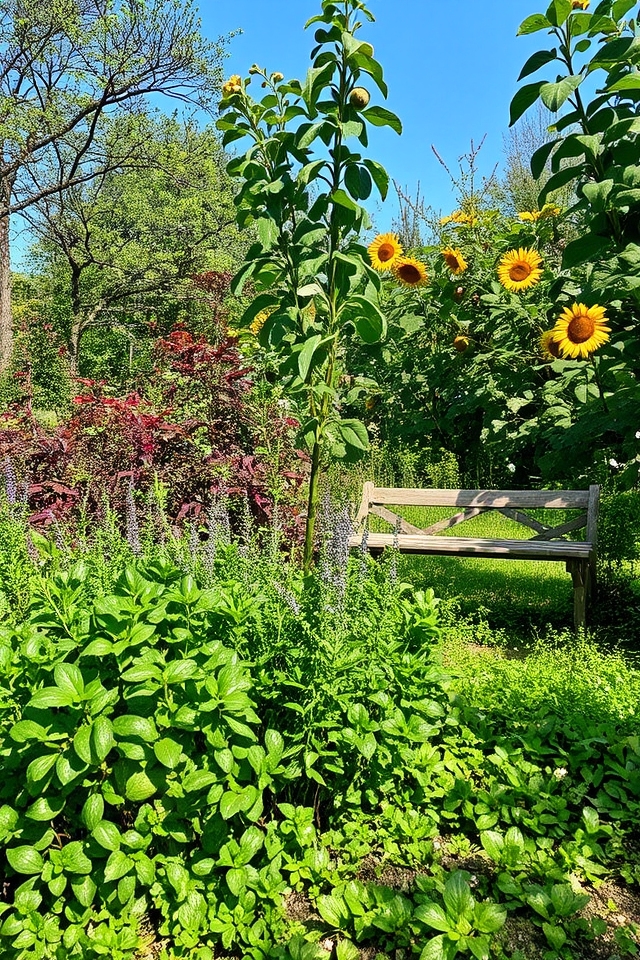
Implementing a food forest is a sustainable gardening approach that mimics natural ecosystems, allowing various plants to thrive together. This method typically involves layering plants in a way that resembles a woodland structure, including tall trees, smaller fruit and nut trees, shrubs, herbs, and ground cover. By diversifying plant selection, a food forest can enhance biodiversity, improve soil health, and provide year-round harvests of fruits, nuts, and vegetables while requiring minimal maintenance.
Cultivate a Succulent Oasis
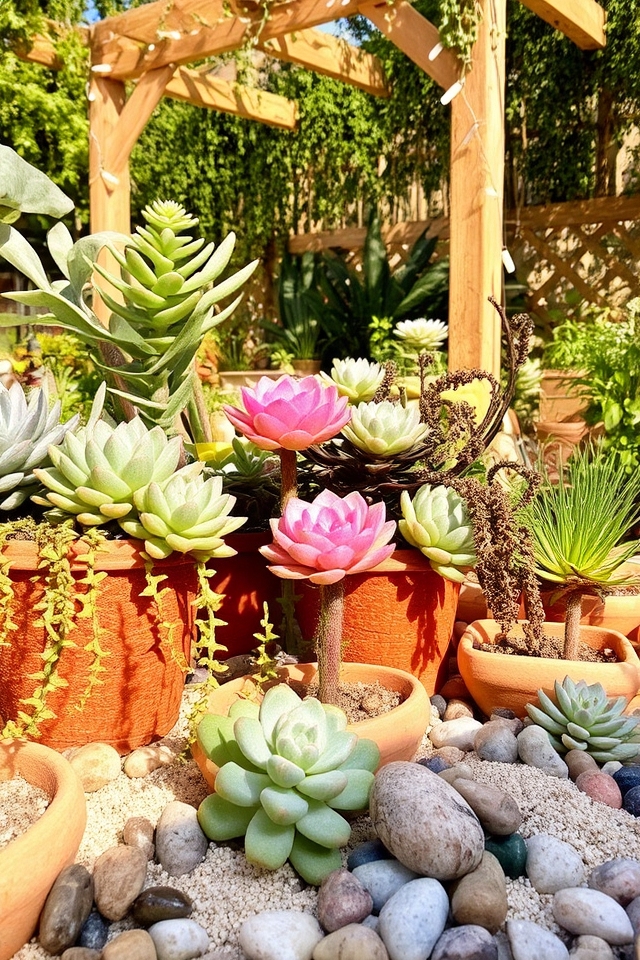
Creating a succulent oasis is an inspiring way to design a low-maintenance garden filled with unique textures and vibrant colors. Begin by selecting a variety of succulents with diverse shapes and shades, such as rosettes, trailing varieties, and those with fuzzy leaves. Design your layout in well-draining containers or raised beds, incorporating decorative rocks or sand for a desert-like feel. These drought-tolerant plants thrive in sunny spots, making them perfect for adding beauty to your outdoor space while requiring minimal care.
Add Seasonal Decorations
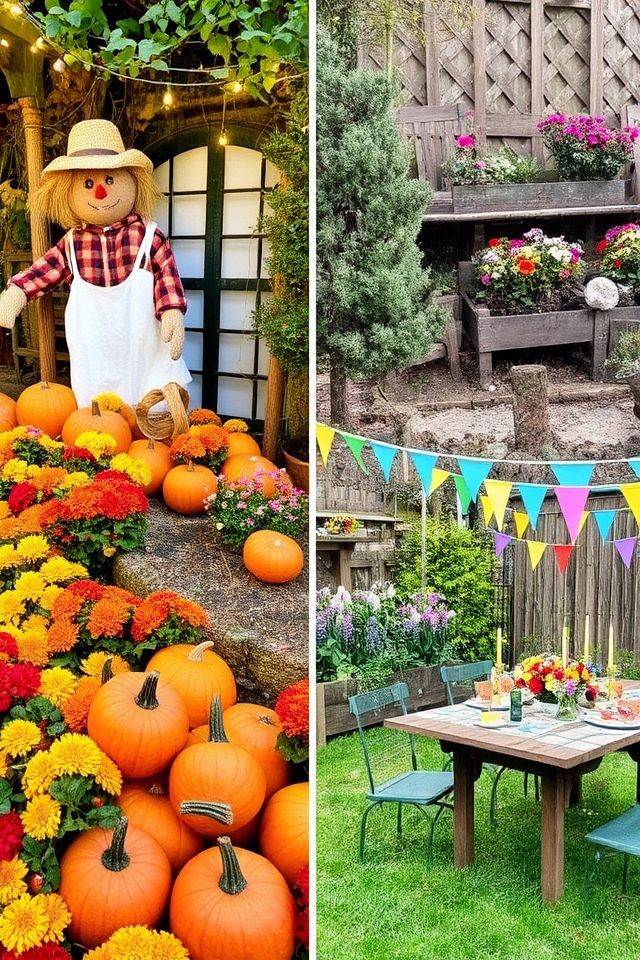
Enhancing your garden with seasonal decorations can create a vibrant and inviting atmosphere. From colorful pumpkins and scarecrows in the fall to radiant lights and ornaments during the winter holidays, these accents bring life to your outdoor space year-round. Consider using themed planters filled with seasonal flowers or adding festive banners and garlands. By rotating your decorations with the changing seasons, you can keep your garden fresh and engaging, making it a delightful retreat for family and friends.
Install a Living Wall
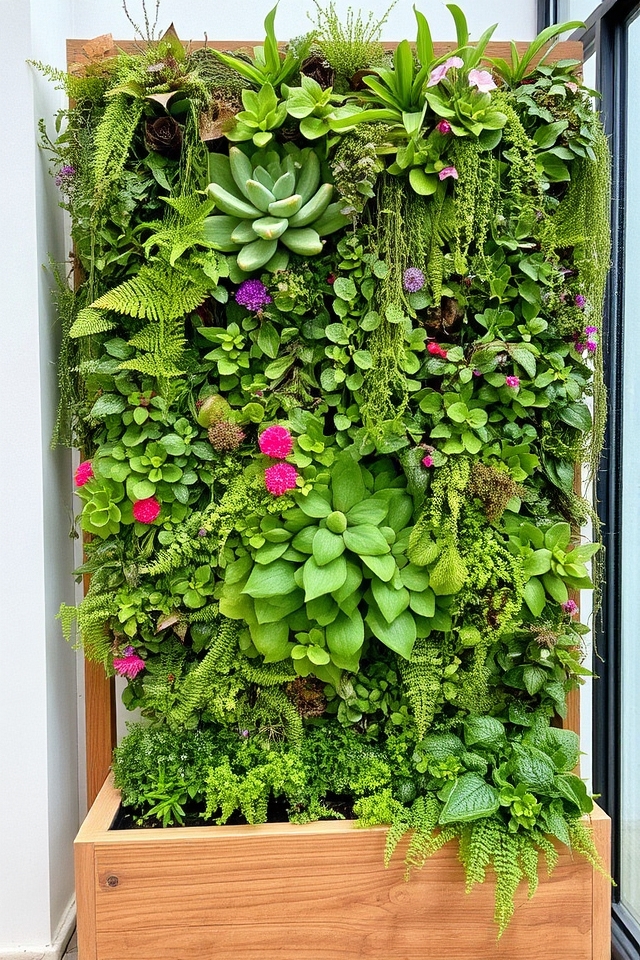
A living wall, also known as a vertical garden, is an innovative way to bring greenery into small spaces or enhance any garden. This structure consists of plants grown vertically on a wall or frame, using a variety of soil, plants, and irrigation systems. It can improve air quality, provide insulation, and add aesthetic appeal. Ideal for urban settings, a living wall not only maximizes space but also serves as a stunning focal point, promoting biodiversity and sustainability.
Organize a Garden Pathway
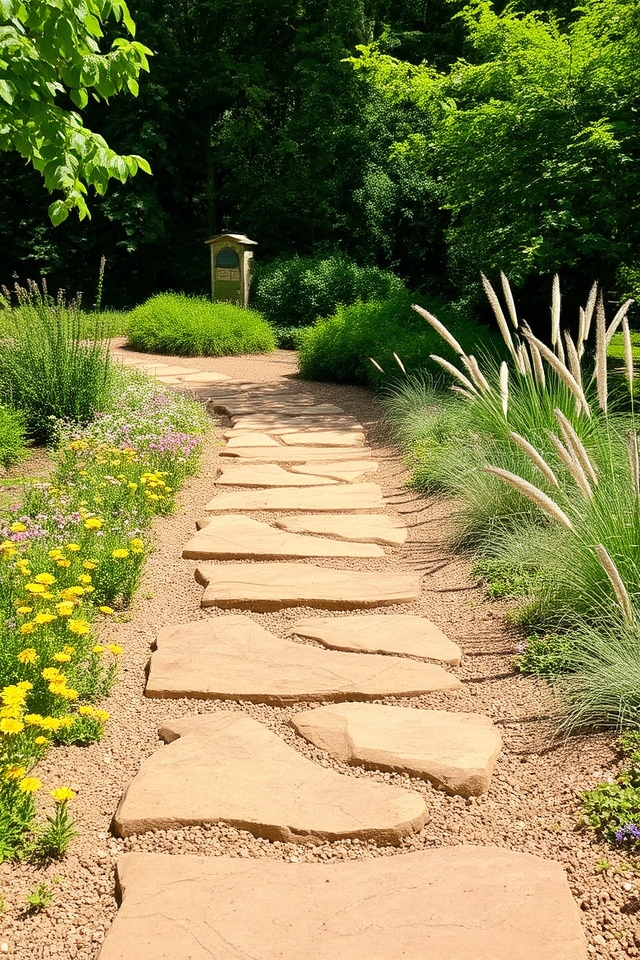
Creating a garden pathway is essential for enhancing both aesthetics and functionality. Choose materials like gravel, stepping stones, or wooden planks to define your path, ensuring it complements your garden’s overall theme. Strategically place the pathway to guide visitors through the landscape, allowing them to appreciate various plantings and features. Additionally, consider lining the edges with low-growing flowers or ornamental grasses to add charm and make the pathway inviting while promoting accessibility and ease of maintenance.
Experiment With Companion Planting
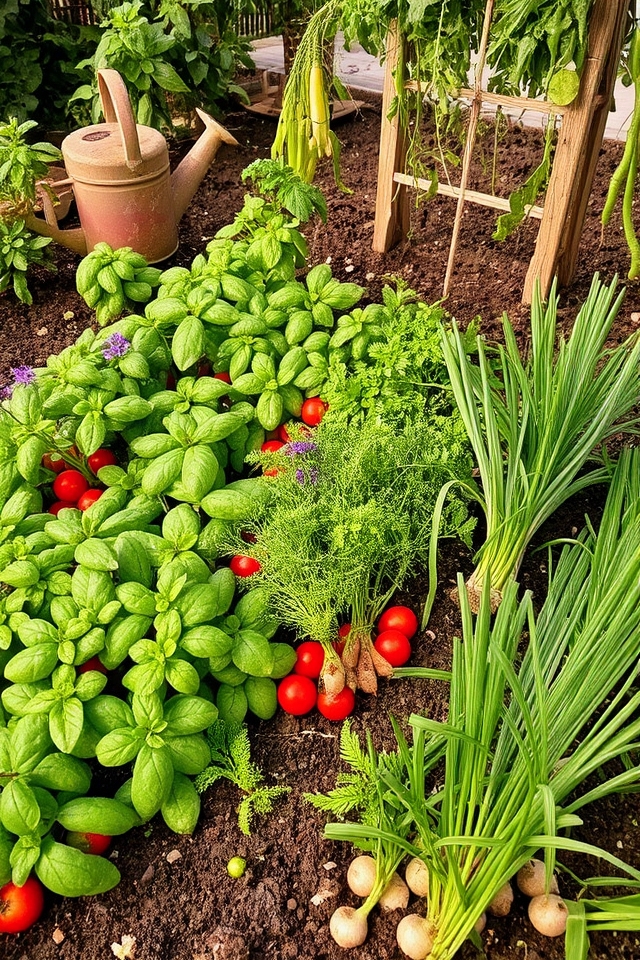
Companion planting is an innovative gardening technique that involves planting different types of crops in close proximity to enhance growth and repel pests. By pairing plants that benefit each other—like tomatoes with basil or carrots with onions—you can create a more productive and healthy garden. This method not only maximizes space but also minimizes the need for chemical pesticides, leading to a more sustainable gardening practice. Experiment with various combinations to discover what works best for your garden!
Connect With Garden Art and Sculptures
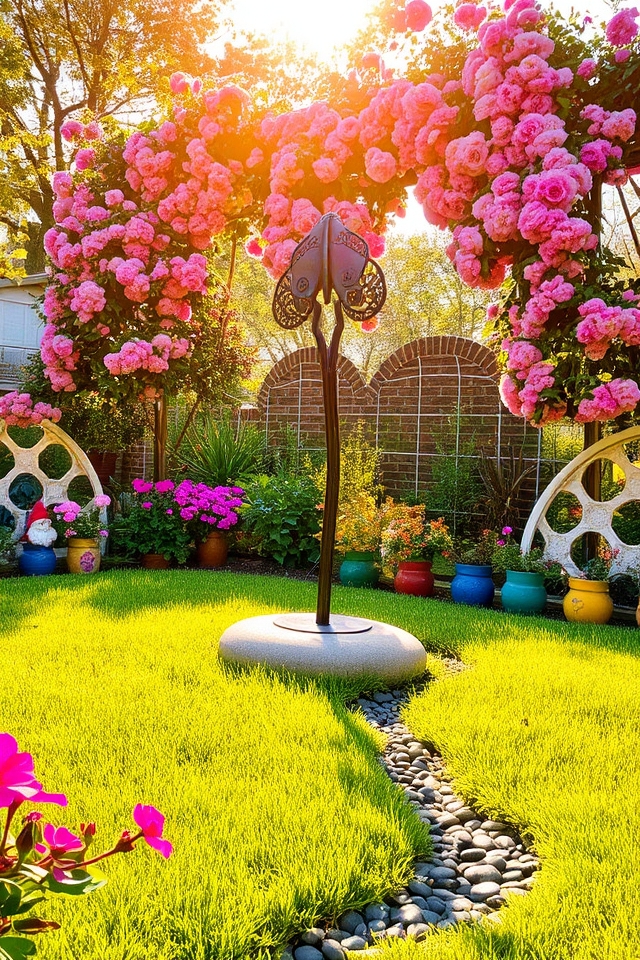
Enhancing your garden with art and sculptures can create focal points that elevate the overall aesthetic. Consider incorporating eye-catching pieces that reflect your personality or complement your plant selections. From whimsical figurines to elegant metalwork, garden art adds charm and character. Position sculptures amidst flower beds or atop pedestals to draw attention while harmonizing with the natural surroundings. This artistic touch not only beautifies your outdoor space but can also inspire creativity and tranquility.
Conclusion
As you step into your garden, consider it a canvas waiting for your brushstrokes. Each flower, herb, and pathway tells a story of harmony and growth, a symphony of nature echoing your intentions. By weaving together beauty and purpose, you’re not just planting; you’re crafting a sanctuary. Like a skilled artist, nurture this vibrant masterpiece, letting it evolve and flourish. In this green space, you find not just vegetables or blooms, but a reflection of your own journey.



